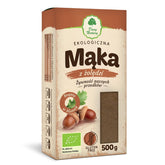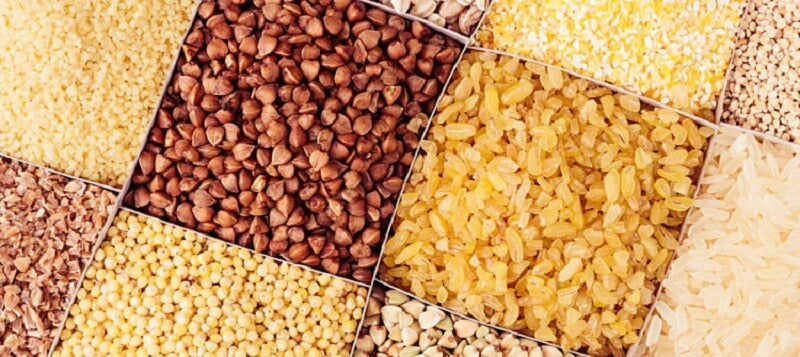Groats - types, properties, application
Healthy, nutritious, positively influencing the work of our body and providing it with many valuable ingredients – groats have many benefits, so it is definitely worth including them in your daily diet.
Groats are edible seeds of cereals (and so-called pseudocereals, such as buckwheat), which come in finely ground or simply peeled forms. What distinguishes cereals and gives them exceptionally high nutritional value is the fact that they contain a large amount of starch and fiber, as well as numerous vitamins, macro- and microelements, and protein. There are many types of cereals, but among them are some that are very popular. Let's take a look at which cereals are worth choosing and what ingredients they can be combined with to create tasty and wholesome dishes.
buckwheat
Buckwheat groats are made from the seeds of the aforementioned buckwheat groats. Two varieties can be distinguished: roasted and unroasted (roasted and unroasted). The former has a darker color and a slightly more intense flavor. The energy value of buckwheat groats is approximately 359 calories per 100 g of the product, and its composition is clearly dominated by carbohydrates (up to 72.40 g in 100 g of the product!). It also contains a significant amount of antioxidants responsible for eliminating free radicals, as well as fiber, thanks to which doctors recommend its consumption for intestinal problems. It is a gluten-free option that tastes great combined with vegetables (including vegetable sauce) and is also perfect as a filling.
millet
Small, with a slightly sweet flavor and yellow color, millet is extremely versatile in its culinary combinations. Millet is characterized by its high content of silicon and iron (which help strengthen our joints and eliminate brittle nails) and fiber (which effectively supports the digestive system). It also contains lecithin, which supports our nervous system, and is gluten-free. Millet groats can be served with vegetables and fruit, and they also go well with milk. This type of groats will appeal to both lovers of savory dishes and those who prefer sweet and dessert dishes.
Barley groats
Barley groats are made from common barley grains and include: barley, pearl barley, and broken barley. As with the varieties described above, this one also boasts a high fiber content and large amounts of vitamin PP. This type of groats helps fight bad cholesterol, maintains the proper condition of the intestinal mucosa, and prevents blood sugar spikes. What does barley groats taste best with? Of course, with vegetables, preferably seasonal ones.
These are just three types of groats, but it's worth remembering that there are many more—we can include couscous, corn grits, and oat groats. It's worth making sure groats are on our plates often because they're a great source of complex carbohydrates and—as we mentioned in the sections above—contain many minerals such as magnesium, zinc, iron, and potassium. In addition, including groats in your diet can have a positive effect on concentration and even significantly improve sleep quality.
THE PUBLISHER'S CHOICE
Dried plums 1 kg BIOGO
- £6.07
- £6.07
- Unit price
- / per
Dried White Mulberries 500 g ORGANIC
- £5.06
- £5.06
- Unit price
- / per
Almonds 1 kg BIOGO
- £10.13
- £10.13
- Unit price
- / per
Cranberries sweetened with apple juice organic 1 kg BIOGO
- £14.18
- £14.18
- Unit price
- / per
Dried dates 1 kg BIOGO
- £3.65
- £3.65
- Unit price
- / per
Unpeeled buckwheat groats 1 kg BIOGO
- £2.43
- £2.43
- Unit price
- / per
Walnuts 800 g BIOGO
- £7.50
- £7.50
- Unit price
- / per
Peeled sunflower seeds 1 kg BIOGO
- £2.63
- £2.63
- Unit price
- / per
PULLED ORGANIC SUNFLOWER SEEDS 1 KG BIOGO
- £3.85
- £3.85
- Unit price
- / per












































































































































